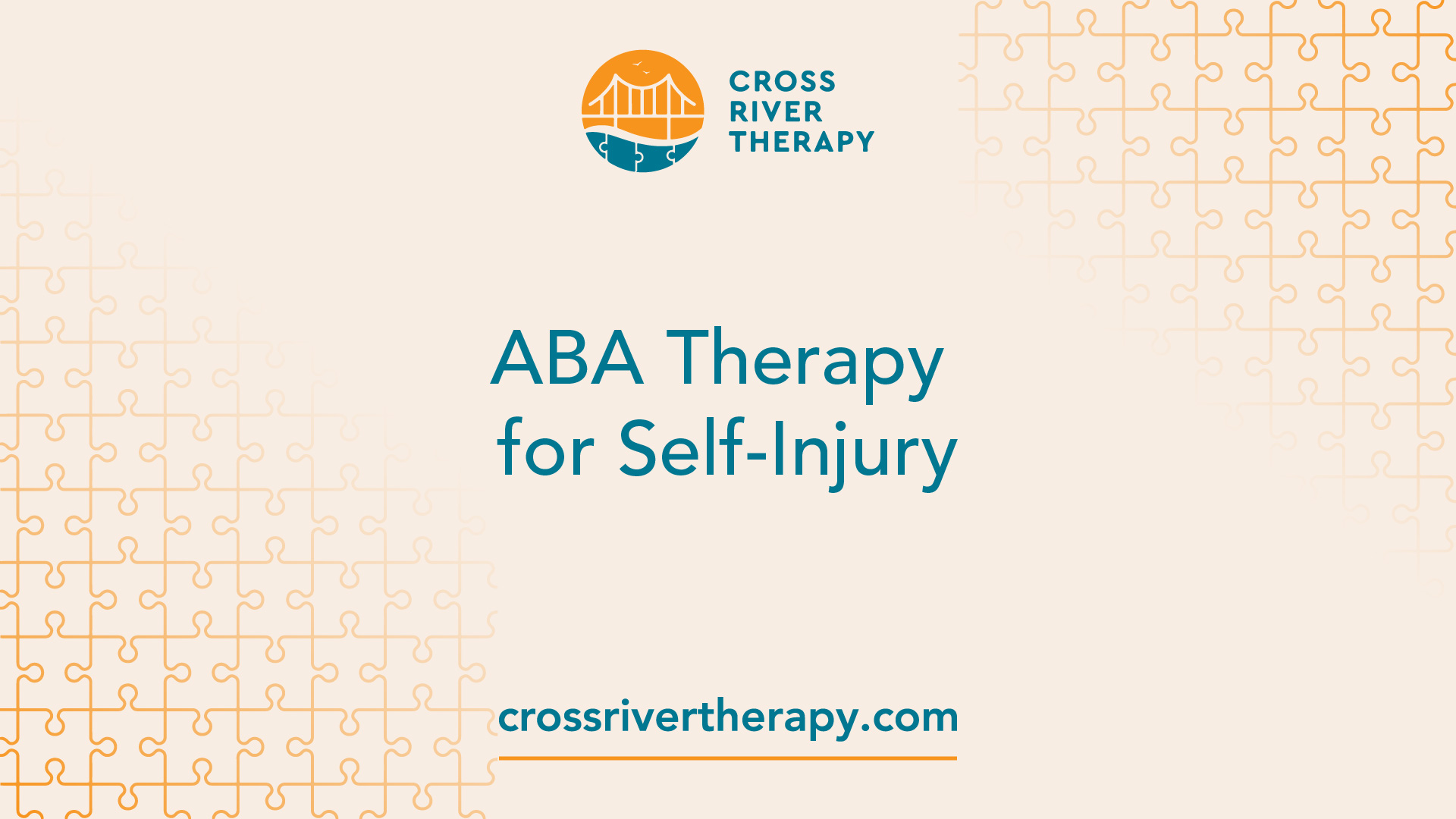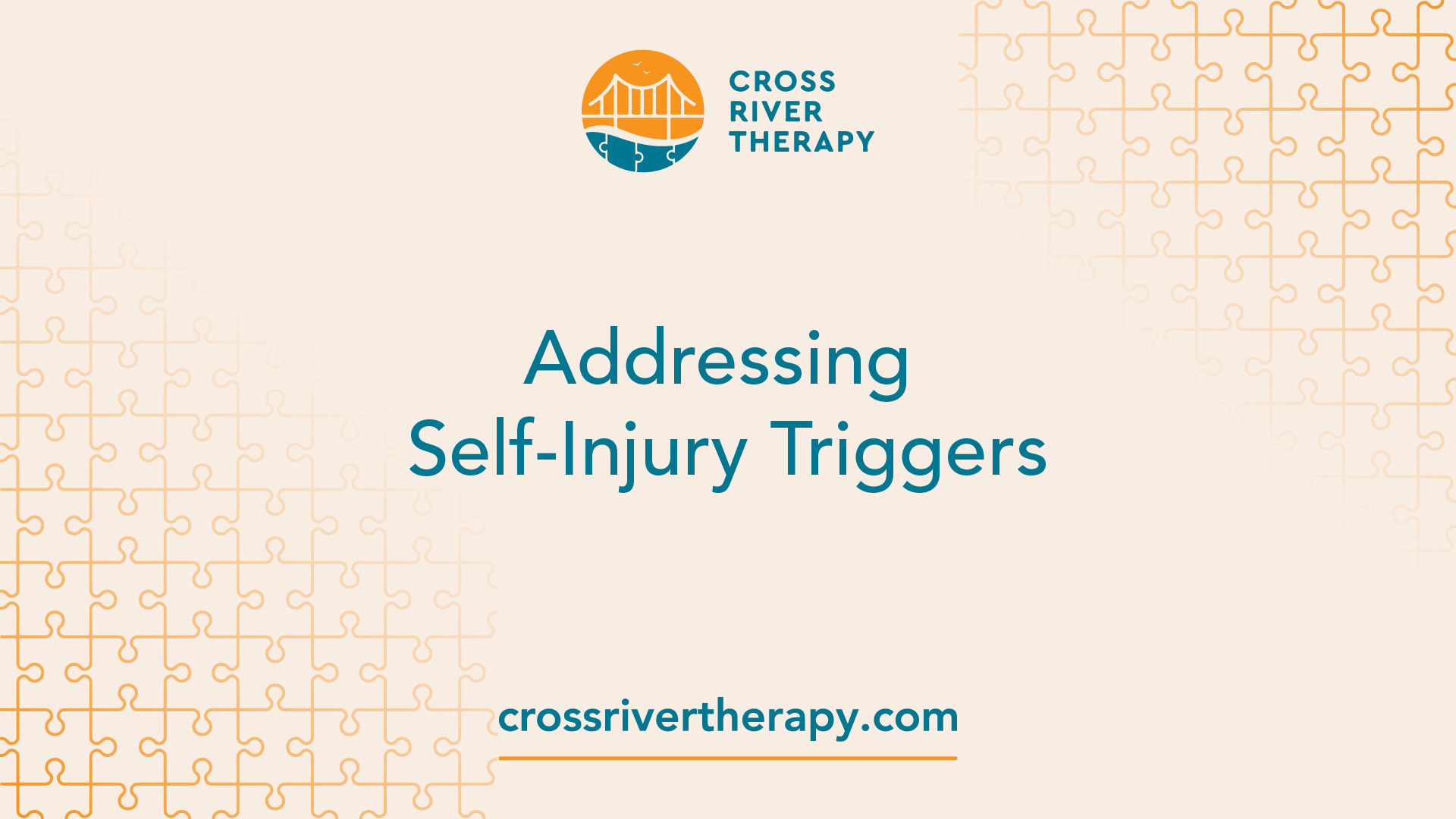Addressing Self-Injurious Behaviors with ABA Therapy
Address triggers and find hope for your child's well-being.

Understanding ABA Therapy
ABA therapy, which stands for Applied Behavior Analysis therapy, is a widely recognized and evidence-based treatment for individuals diagnosed with Autism Spectrum Disorder (ASD). It is considered a best practice treatment by the US Surgeon General and the American Psychological Association, indicating its effectiveness and quality.
Introduction to ABA Therapy
ABA therapy is a scientific and evidence-based approach that helps individuals with autism learn and develop skills to improve and manage their behaviors. It is particularly beneficial as an early intervention approach for children with autism, as it allows them to acquire skills they will use throughout their lives, such as communication, social interaction, independence, and preparation for the world.
The main goal of ABA therapy is to increase socially significant behaviors while decreasing behaviors that may be harmful or interfere with the individual's daily functioning. ABA therapists work closely with individuals with autism to assess their needs, develop personalized treatment plans, and implement interventions that are tailored to their specific challenges and goals.
ABA Therapy Effectiveness
Numerous studies have shown that ABA-based interventions are highly effective for individuals with autism. These interventions encompass a range of techniques, including shaping, discrete trial teaching, incidental teaching, pivotal response training, naturalistic developmental behavioral interventions, group instruction, behavioral skills training, functional communication training, functional analysis, extinction, and response cost.
The effectiveness of ABA therapy is supported by a substantial body of literature. Organizations such as Autism Speaks, The Association for Behavior Analysis International, the United States Surgeon General, National Institute of Mental Health, and the American Psychological Association endorse ABA-based interventions as evidence-based practices for individuals diagnosed with ASD [3].
ABA therapy has been shown to have a positive impact on various aspects of an individual's life, including reducing problem behaviors, improving communication and social skills, enhancing adaptive skills, promoting independence, and preparing individuals for future success.
In the context of addressing self-injurious behaviors, ABA therapy provides practical methods and compassionate care to help individuals with autism manage their aggression and self-injury tendencies. Through ABA therapy, individuals learn alternative, more adaptive behaviors to replace self-injury, ultimately leading to a safer and more fulfilling life.
The effectiveness of ABA therapy is a result of its individualized approach, data-driven decision-making, and focus on teaching new skills and reducing problem behaviors. By utilizing the principles and techniques of ABA therapy, individuals with autism can make significant progress in managing their behaviors and improving their overall quality of life.
Implementing ABA Therapy
When it comes to implementing ABA therapy, it is important to understand the roles of the therapists involved and the principles that guide this therapeutic approach.
Therapist Roles in ABA
ABA therapy programs involve a team of professionals who work together to provide comprehensive treatment for individuals with autism. A board-certified behavior analyst (BCBA) plays a key role in developing and overseeing the ABA therapy program. The BCBA is responsible for conducting assessments, creating behavior intervention plans, and monitoring progress. They also provide guidance and supervision to the therapists involved in the therapy process [1].
Therapists who work directly with individuals receiving ABA therapy are often registered behavior technicians (RBTs) or trained therapists. They implement the strategies and techniques outlined in the behavior intervention plan under the supervision of the BCBA. These therapists are trained to record and analyze data, implement behavior reduction procedures, and teach new skills to individuals with autism.
Principles of ABA Therapy
ABA therapy is guided by several core principles that form the foundation of this therapeutic approach. One of the main principles is the use of positive reinforcement, where a person is more likely to repeat a behavior if it is followed by something valued, such as a reward. Positive reinforcement encourages positive behavior change over time.
Another important principle of ABA therapy is the focus on socially significant skills. ABA therapists work with individuals and their families to identify goals that are important and meaningful based on the individual's needs. This ensures that the therapy targets skills that will help the individual function within their environments and society. ABA therapy aims to improve socialization and basic living skills, providing individuals with the tools they need to navigate daily life [2].
ABA therapy also follows the seven dimensions of ABA, which include generalization, effectiveness, technological aspects, application of skills, conceptual systematic approach, analytics, and addressing behaviors. These dimensions ensure that ABA therapy is based on meaningful research and treatment, providing a comprehensive and evidence-based approach to helping individuals with autism [2].
By understanding the roles of therapists in ABA and the principles that guide this therapy, families can feel confident in the comprehensive and evidence-based nature of ABA therapy. This collaborative approach aims to help individuals with autism develop essential skills, improve their quality of life, and reach their full potential.
ABA Therapy for Self-Injury

When it comes to addressing self-injurious behaviors in individuals with autism, Applied Behavior Analysis (ABA) therapy can play a significant role. ABA therapy focuses on understanding the causes and triggers of self-injury and implementing effective intervention strategies to promote positive behaviors and reduce self-injurious behaviors.
Causes of Self-Injurious Behavior
Self-injury is not a symptom of autism itself, but certain symptoms, situations, and comorbidities related to Autism Spectrum Disorder (ASD) can lead some individuals with autism to engage in self-injurious behavior. It is important to note that self-injury can serve different functions for individuals with autism, and identifying the underlying causes is crucial for effective intervention [4]. Some potential causes include:
- Communication difficulties: Individuals with autism may engage in self-injury as a means of communication, attempting to convey feelings or ideas they cannot express in words.
- Sensory stimulation: Self-injury may serve as a form of sensory stimulation, with individuals self-injuring to increase or decrease their level of arousal.
- Learned behavior: Self-injury can be a learned behavior unintentionally reinforced by caregivers or parents.
Understanding the specific causes of self-injurious behavior in each individual is essential in developing effective intervention strategies.
Addressing Self-Injury Triggers

ABA therapy focuses on identifying the triggers that lead to self-injurious behavior and implementing strategies to address and minimize those triggers. Intervention strategies may include:
- Teaching alternative behaviors: ABA therapists work with individuals to teach them alternative behaviors that can replace self-injurious behaviors. For example, teaching individuals to use appropriate communication methods to express their needs and wants.
- Removing or altering triggers: Identifying and modifying environmental or situational triggers that may prompt self-injurious behavior. This may involve creating a structured and predictable environment or making changes to routines.
- Reinforcing positive behaviors: ABA therapists use positive reinforcement techniques to reward and reinforce positive behaviors, gradually reducing the occurrence of self-injurious behaviors.
- Treating physical ailments: It is important to address any physical ailments or discomfort that may be contributing to self-injurious behaviors. Treating underlying medical conditions or providing appropriate pain management can help reduce the frequency of self-injury.
To effectively address self-injury, a comprehensive assessment known as a Functional Behavioral Assessment (FBA) is often conducted. This assessment helps identify the function of self-injurious behavior in individuals with autism. By understanding the antecedents, behaviors, and consequences surrounding self-injury, a tailored Behavior Intervention Plan (BIP) can be developed to guide interventions and promote positive behaviors. For more information on FBAs and BIPs, refer to our section on Functional Behavioral Assessment and Behavioral Intervention Plan.
By implementing ABA therapy, individuals with autism can learn alternative behaviors, reduce self-injurious behaviors, and develop effective communication and coping skills. It is important to work closely with qualified ABA therapists who specialize in addressing self-injury in individuals with autism to ensure the best outcomes for the individual.
Intervention Strategies
When it comes to addressing self-injurious behaviors in individuals with autism, ABA therapy utilizes various intervention strategies to promote positive behavior change. Two key strategies commonly employed in ABA therapy for self-injury are the functional behavioral assessment (FBA) and the behavioral intervention plan (BIP).
Functional Behavioral Assessment
A functional behavioral assessment (FBA) is a critical step in understanding the function or purpose behind self-injurious behaviors in individuals with autism. This assessment process involves identifying the antecedents (triggers), behaviors, and consequences associated with the self-injurious behavior. By gathering detailed information about these factors, therapists can gain insights into the underlying reasons behind the behavior and develop effective intervention strategies.
During an FBA, therapists may use a combination of methods such as direct observations, interviews with caregivers and teachers, and the collection of behavior data. This comprehensive assessment helps to determine the potential triggers, patterns, and maintaining factors associated with the self-injurious behavior. The information gathered from the FBA serves as a foundation for the development of a tailored and effective behavioral intervention plan (BIP).
Behavioral Intervention Plan
Based on the information gathered through the FBA, a behavioral intervention plan (BIP) is created to guide the intervention strategies for addressing self-injurious behaviors. The BIP outlines specific strategies and techniques to be implemented by therapists, parents, and caregivers to promote positive behavior change and reduce self-injurious behaviors.
A well-designed BIP typically includes antecedent manipulations, reinforcement-based strategies, extinction-based strategies, and, in some cases, punishment-based strategies. Antecedent manipulations involve modifying the environment to reduce the likelihood of triggering the self-injurious behavior. Reinforcement-based strategies focus on rewarding appropriate behaviors and providing positive reinforcement to encourage the development of alternative, more adaptive behaviors. Extinction-based strategies involve withholding reinforcement following self-injurious behavior to reduce its occurrence. Punishment-based strategies, when necessary, involve the application of a consequence to decrease the frequency of self-injury.
The BIP is tailored to the individual's needs and aims to teach and reinforce alternative, socially appropriate behaviors to replace self-injurious behaviors. It should be implemented consistently across different settings, such as home and school, to maximize its effectiveness. Regular data collection and analysis are essential to monitor progress and make any necessary adjustments to the intervention strategies.
By utilizing the FBA and BIP, ABA therapy provides a systematic and evidence-based approach to address self-injurious behaviors in individuals with autism. These intervention strategies aim to understand the underlying causes of self-injury and develop effective plans for behavior change. With the support of therapists, parents, and caregivers, individuals with autism can develop new skills and behaviors to replace self-injurious behaviors, leading to improved well-being and quality of life.
ABA Therapy Success Stories
ABA therapy has shown remarkable success in addressing self-injurious behaviors in individuals diagnosed with autism. Through the implementation of personalized treatment plans, ABA therapy has helped many individuals achieve significant improvements in their behavior, communication skills, and overall quality of life. Let's explore some of the success stories associated with ABA therapy.
Case Studies and Results
Numerous studies have demonstrated the effectiveness of ABA therapy in improving outcomes for children with autism. Over 20 studies have established that intensive and long-term therapy using ABA principles leads to gains in intellectual functioning, language development, daily living skills, and social functioning.
In a review of 27 studies conducted in 2011, children who received ABA therapy exhibited improvements in language, adaptive behavior, cognitive ability, and social skills. These children also demonstrated lower levels of aggression and anxiety, which reduced dangerous behaviors such as self-harm and harm towards others.
A study conducted in 2012 involved 48 toddlers who received six months of ABA therapy starting at around two years old. The results showed significant improvements in their communication and cognitive skills, as well as a decrease in the severity of their autism symptoms. This study emphasized the importance of early intervention with ABA therapy for optimal results.
Long-Term Impact of ABA
The long-term impact of ABA therapy extends beyond the immediate improvements in behavior and skills. ABA therapy equips individuals with autism and their families with valuable tools and strategies to navigate daily life more effectively. By targeting areas of deficit and helping individuals develop new skills, ABA therapy prepares individuals to become self-advocates, promoting independence and a higher quality of life.
Notably, ABA therapy is most effective when implemented as early intervention. Starting therapy at a young age allows children to acquire the necessary skills that will benefit them throughout their lives. By focusing on communication, social interaction, and independence, ABA therapy sets the foundation for continued growth and development.
These success stories highlight the transformative impact of ABA therapy in addressing self-injurious behaviors and improving overall functioning in individuals with autism. Through personalized treatment plans and the dedication of skilled therapists, ABA therapy continues to empower individuals to reach their full potential.
Addressing Controversies
While ABA therapy has proven to be effective for addressing self-injurious behaviors and other challenges faced by individuals with autism, it is not without its fair share of controversies. In this section, we will address some of the criticisms of ABA therapy and discuss the evolving practices within the field.
Criticisms of ABA Therapy
Some autistic self-advocates argue that ABA therapy tries to make children with autism fit neurotypical standards, which they believe is not appropriate as autistic children have different needs. They suggest that speech and language therapy may be a more helpful way for autistic children to build skills and independence [7]. It's important to note that ABA therapy has evolved over time, and modern practices aim to focus on the individual's unique needs and strengths, while still addressing areas of challenge.
Another criticism of ABA therapy is that it can be repetitive, which some believe may be too demanding for children. However, it's worth mentioning that modern ABA practices often incorporate fun and engaging activities to make learning more enjoyable for the child. ABA therapists are trained to create a positive and supportive environment that fosters the child's growth and development.
Evolving ABA Practices
Concerns raised by autism rights and neurodiversity activists have led to ongoing discussions about ABA reform and the need to address various aspects within interventions for individuals diagnosed with Autism Spectrum Disorder (ASD). The field of ABA has been responsive to these concerns and has made notable advancements in recent years.
Modern ABA practices focus more on positive reinforcement and non-aversive methods, moving away from punishment-based procedures that were used in the past. ABA interventions now prioritize reinforcement-based strategies to encourage desirable behaviors and minimize the use of punishment-based procedures [3]. The emphasis is on creating a supportive and nurturing environment that promotes the child's overall well-being.
Additionally, concerns about the intensity of ABA-based interventions have been raised. While some question the recommended number of hours of intervention, research has shown that more hours of ABA-based intervention at an early age are correlated with improvements in various measures for individuals diagnosed with ASD. ABA practitioners work closely with families to develop treatment plans that are tailored to the needs of each individual, considering factors such as age, developmental level, and family dynamics.
It's important to note that the field of ABA therapy continues to evolve as new research and practices emerge. Practitioners are dedicated to staying up-to-date with the latest advancements and implementing evidence-based strategies to provide the best possible care for individuals with autism.
By addressing criticisms and striving for continuous improvement, the ABA therapy community aims to ensure that interventions are effective, ethical, and respectful of the individual's unique needs and goals. The ongoing dialogue surrounding ABA therapy helps shape the future of the field, promoting inclusivity and enhancing the lives of individuals with autism.
References
[1]: https://www.autismspeaks.org/applied-behavior-analysis
[2]: https://behavioral-innovations.com/autism-101/what-is-aba/
[3]: https://www.ncbi.nlm.nih.gov/pmc/articles/PMC9114057/
[4]: https://autism.org/causes-and-interventions-for-self-injury-in-autism/
[5]: https://www.ncbi.nlm.nih.gov/pmc/articles/PMC3990505/
[6]: https://www.fortahealth.com/resources/aba-therapy-success-rates-for-autism
[7]: https://childmind.org/article/controversy-around-applied-behavior-analysis/



